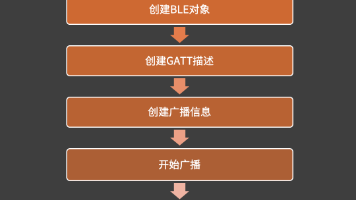汽车-时空预测astgcn的数据结构分析
数据结构分析与预处理一、原始数据结构shape:(时间点长度,节点个数,特征个数)1.1 案例示意选取6月20日早上8点到9点数据,网络的站点(网格划分)是5个,每个站点具有3个特征。8:00-8:05[ 特征1, 特征2,特征3]----节点1的特征[4,5,6]-----节点2的特征[7,8,9]-----节点3的特征[10,1
数据结构分析与预处理
粉丝可以查看mxnet的代码详解! 如果有torch版本的请给我交流!
一、原始数据结构
shape:(时间点长度,节点个数,特征个数)
1.1 案例示意
选取6月20日早上8点到9点数据,网络的站点(网格划分)是5个,每个站点具有3个特征。
- 8:00-8:05
[ 特征1, 特征2, 特征3] ----节点1的特征
[ 4, 5, 6] -----节点2的特征
[ 7, 8, 9] -----节点3的特征
[ 10, 11, 12] -----节点4的特征
[ 13, 14, 15] -----节点5的特征
- 8:05-8:10
[ 特征1, 特征2, 特征3] ----节点1的特征
[ 4, 5, 6] -----节点2的特征
[ 4, 5, 7] -----节点3的特征
[ 10, 9, 8] -----节点4的特征
[ 13, 14, 15] -----节点5的特征
- 8:10-8:15
- …
- 8:55-9:00
[ 特征1, 特征2, 特征3] ----节点1的特征
[ 4, 5, 6] -----节点2的特征
[ 7, 8, 9] -----节点3的特征
[ 10, 11, 12] -----节点4的特征
[ 13, 14, 15] -----节点5的特征
1.2 python中的数据形式
>>>data
array([
[[ 特征1, 特征2, 特征3] ,
[ 4, 5, 6] ,
[ 7, 8, 9] ,
[ 10, 11, 12] ,
[ 13, 14, 15] ], # 8:-8:05
[[ 特征1, 特征2, 特征3] ,
[ 4, 5, 6] ,
[ 4, 5, 7] ,
[ 10, 9, 8] ,
[ 13, 14, 15]], #8:05-8:10
...
[[ 特征1, 特征2, 特征3] ,
[ 4, 5, 6] ,
[ 7, 8, 9] ,
[ 10, 11, 12] ,
[ 13, 14, 15]] #8:55-9:00
])
>>>data.shape
(12, 5, 3)
二、原始数据批量处理之生成每个批量的索引序列
2.1 代码分析
def search_data(sequence_length, num_of_batches, label_start_idx,
num_for_predict, units, points_per_hour):
'''
Parameters
----------
sequence_length : int, length of all history data 历史数据的序列长度
num_of_batches : int, the number of batches will be used for training 用于训练的batch 的个数
label_start_idx : int, the first index of predicting target 预测目标的第一索引
num_for_predict : int,the number of points will be predicted for each sample 每个样本的预测的节点数
units : int, week: 7 * 24, day: 24, recent(hour): 1
points_per_hour : int, number of points per hour, depends on data 每个小时划分的时间段的个数
Returns
----------
list[(start_idx, end_idx)]
'''
if points_per_hour < 0: # 每个小时划分的时间段的个数要>=0,否则报错
raise ValueError("points_per_hour should be greater than 0!")
if label_start_idx + num_for_predict > sequence_length: # 如果: 预测目标的开始索引+预测的个数>序列长度;也就是说在这个索引的位置上,不足以进行预测了
return None
x_idx = []
for i in range(1, num_of_batches + 1): # 在【1,batch的个数+1) 之间循环;共循环 num_of_batches 次 ;对于每一个batch
start_idx = label_start_idx - points_per_hour * units * i # batch 的开始索引=预测标签的开始索引-每小时的片段个数(12)*单元时间(周:7*24)*i
end_idx = start_idx + num_for_predict # batch 的结束索引=开始索引+每个样本预测的节点个数
if start_idx >= 0: # 如果 batch的开始索引 >=0(即未出现负数的时候) 将这个batch的(开始索引,结束索引)添加到列表x_idx中,否则退出函数返回none
x_idx.append((start_idx, end_idx))
else:
return None
if len(x_idx) != num_of_batches: # 如果(开始索引,结束索引)的列表的长度 不等于 batch的数目,则退出函数返回none
return None
return x_idx[::-1] # 列表的取元素【开始:结束:步长】 在这里-1代表逆向步长 也就是说列表的头与尾的颠倒
# 返回的是个 列表:每个元素都是一个元组,每个元组有两个元素(开始索引,结束索引)
# 列表`最多`共有 num_of_batches 个元组
# 实质内容为: 返回的是每个batch的(开始索引,结束索引)
2.2 举例分析
如果采用的是一个月的数据,正好是30天的数据。以每5分钟记录一条数据的话,则共有30∗24∗12=864030*24*12=864030∗24∗12=8640个时间划分。预测的时间长度为1个小时=12∗5min12*5min12∗5min
假设1:num_of_batches=50
- 对于week_sample:以一周为单位,units=7∗24=7*24=7∗24
第一个batch开始的索引start_idx=8640−7∗24∗12∗1=6624=8640-7*24*12*1=6624=8640−7∗24∗12∗1=6624,
结束索引end_idx=star_idx+num_for_predict=6624+126624+126624+12 # 288是一天的时间段
第二个batch开始的索引start_idx=8640−7∗24∗12∗2=4608,=8640-7*24*12*2=4608,=8640−7∗24∗12∗2=4608,
结束索引end_idx=star_idx+num_for_predict=4608+124608+124608+12 # 288是一天的时间段
第三个batch开始的索引start_idx=8640−7∗24∗12∗3=2592,=8640-7*24*12*3=2592,=8640−7∗24∗12∗3=2592,
结束索引end_idx=star_idx+num_for_predict=2592+122592+122592+12 # 288是一天的时间段
第四个batch开始的索引start_idx=8640−7∗24∗12∗4=576,=8640-7*24*12*4=576,=8640−7∗24∗12∗4=576,
结束索引end_idx=star_idx+num_for_predict=$576+12 # 288是一天的时间段
显然,当计算第5个batch的开始索引时已经为负数了,根据if判断条件,返回None
number_of_batches对于week_samples来说是最多为4,才能保证不返回none
假设2:num_of_batches=2
- 对于week_sample:以一周为单位,units=7∗24=7*24=7∗24
x_idx=[(4608,4608+12),(6624,6624+12)]
- 对于day_sample:以一日为单位,units=24
第一个batch开始的索引start_idx=8640−24∗12∗1=8352=8640-24*12*1=8352=8640−24∗12∗1=8352,
第二个batch开始的索引start_idx=8640−24∗12∗2=8064=8640-24*12*2=8064=8640−24∗12∗2=8064,
x_idx=[(8064,8064+12),(8352,8352+12)]
- 对于hour_sample:以一日为单位,units=1
第一个batch开始的索引start_idx=8640−12∗1=8628=8640-12*1=8628=8640−12∗1=8628,
第二个batch开始的索引start_idx=8640−12∗2=8616=8640- 12*2=8616=8640−12∗2=8616,
x_idx=[(8616,8616+12),(8628,8628+12)]
三、批量处理之生成4类批量数据
- 将根据文件路径加载的原始数据集data_seq传递给参数data_sequence
- 因此原始数据集应该是3维数组的形式
3.1 代码分析
def get_sample_indices(data_sequence, num_of_weeks, num_of_days, num_of_hours,
label_start_idx, num_for_predict, points_per_hour=12):
'''
Parameters
----------
data_sequence : np.ndarray 数据序列(3维数组)
shape is (sequence_length, num_of_vertices, num_of_features)
num_of_weeks, num_of_days, num_of_hours: int
label_start_idx : int, the first index of predicting target 预测目标的第一个索引
num_for_predict : int,the number of points will be predicted for each sample 对每个样本预测的数目
points_per_hour : int, default 12, number of points per hour 每个小时的时间片段数,以5分钟为一个时间段,每个小时共划分12个
Returns
----------
week_sample: np.ndarray 3维数组
shape is (num_of_weeks * points_per_hour,
num_of_vertices, num_of_features)
day_sample: np.ndarray
shape is (num_of_days * points_per_hour,
num_of_vertices, num_of_features)
hour_sample: np.ndarray
shape is (num_of_hours * points_per_hour,
num_of_vertices, num_of_features)
target: np.ndarray
shape is (num_for_predict, num_of_vertices, num_of_features)
'''
week_indices = search_data(data_sequence.shape[0], num_of_weeks, # 生成周的索引序列
label_start_idx, num_for_predict,
7 * 24, points_per_hour)
if not week_indices:
return None
day_indices = search_data(data_sequence.shape[0], num_of_days, # 生成日的索引序列
label_start_idx, num_for_predict,
24, points_per_hour)
if not day_indices:
return None
hour_indices = search_data(data_sequence.shape[0], num_of_hours, # 生成时的索引序列
label_start_idx, num_for_predict,
1, points_per_hour)
if not hour_indices:
return None
# 根据分类,对每个batch的数据合并在一起
week_sample = np.concatenate([data_sequence[i: j]
for i, j in week_indices], axis=0)
day_sample = np.concatenate([data_sequence[i: j]
for i, j in day_indices], axis=0)
hour_sample = np.concatenate([data_sequence[i: j]
for i, j in hour_indices], axis=0)
target = data_sequence[label_start_idx: label_start_idx + num_for_predict]
return week_sample, day_sample, hour_sample, target
3.2 举例分析
在‘假设2:num_of_batches=2’的条件下,分别得到week,day,hour的对应的x_idx为例,生成对应的week_sample,day_sample,hour_sample
- week_sample
x_idx=[(4608,4608+12),(6624,6624+12)]
>>>data_sequence[4608:4620]
# 以5个节点3个特征为例,数据应为1.2 中介绍的形式(12,5,3)
>>>data_sequence[6624:6636]
# 以5个节点3个特征为例,数据应为1.2 中介绍的形式(12,5,3)
week_sample=np.concatenate([data_sequence[4608:4620],data_sequence[6624:6636]],axis=0)
# 按照axis=0合并的话,将后两维看成一个整体的话(12,5*3),对应到矩阵行列中,按照增加行的方式合并。
# 合并后的week_sample的shape:(24,5,3)
- day_sample
同理,如上所示,合并后的day_sample的shape:(24,5,3)
- hour_sample
同理,如上所示,合并后的hour_sample的shape:(24,5,3)
- target
target = data_sequence[label_start_idx: label_start_idx + num_for_predict]
target=data_sequence[8640:8652] # 8640=30*24*12
四、生成train、test、validation数据集
这是一个完整定义的函数,非常长,为了方便理解和记忆,我将其分布为几个步骤
4.1 函数的定义名称与参数解释
def read_and_generate_dataset(graph_signal_matrix_filename,
num_of_weeks, num_of_days,
num_of_hours, num_for_predict,
points_per_hour=12, merge=False):
'''
读取并生成数据集
Parameters
----------
graph_signal_matrix_filename: str, path of graph signal matrix file 图信号矩阵 的文件名
num_of_weeks, num_of_days, num_of_hours: int 周的个数; 天的个数; 小时的个数
num_for_predict: int 预测的个数
points_per_hour: int, default 12, depends on data 每个小时的节点数,默认12,因为 1个小时,每5分钟一个时间段
merge: boolean, default False,
whether to merge training set and validation set to train model 是否将训练集和验证集用于训练
Returns
----------
feature: np.ndarray,
shape is (num_of_samples, num_of_batches * points_per_hour,
num_of_vertices, num_of_features)
target: np.ndarray,
shape is (num_of_samples, num_of_vertices, num_for_predict)
'''
4.2对数据集的加载与轴的变换(在def之内)
# def read_and_generate_dataset():
# 代码开始
data_seq = np.load(graph_signal_matrix_filename)['data'] # 加载数据集
all_samples = []
for idx in range(data_seq.shape[0]): # 数据集的第一维
sample = get_sample_indices(data_seq, num_of_weeks, num_of_days,
num_of_hours, idx, num_for_predict,
points_per_hour)
## 返回3个样本: 周样本,日样本,时样本; + 1个标签:target;都是3维数组
## 如果传入 周数目、天数目、时数目、为空,则返回none
if not sample:
continue
# 当sample=none时,not sample 的布尔值为true,则跳过 for 循环中 continue 下面的内容
week_sample, day_sample, hour_sample, target = sample
# 样本sample不为none时,则对返回的3个样本和1个标签 进行拆包
all_samples.append((
np.expand_dims(week_sample, axis=0).transpose((0, 2, 3, 1)),
np.expand_dims(day_sample, axis=0).transpose((0, 2, 3, 1)),
np.expand_dims(hour_sample, axis=0).transpose((0, 2, 3, 1)),
np.expand_dims(target, axis=0).transpose((0, 2, 3, 1))[:, :, 0, :] # target 的特征个数为1个
))
函数解析
np.expand_dims(ndarray,axis)
对ndarray的shape下(aixa=0,axis=1,axis=2)也就是在axis=0的位置进行升维度
案例:
a = np.array([[[1,2,3],[4,5,6]]]) a.shape: (1, 2, 3) b = np.expand_dims(a, axis=0) b.shape:(1, 1, 2, 3) b:array([[[[1,2,3],[4,5,6]]]]) a:list([1,2,3] [4, 5, 6]) b:DataFrame([1, 2, 3] [4, 5, 6]])
transpose坐标轴转换函数
以week_sample=7∗247*247∗24
本来shape(0,1,2,3)=(1, 7*24*12, 顶点个数, 特征个数)⟹\Longrightarrow⟹
(1, 顶点个数, 特征个数, 7*24*12)
结果分析
all_samples:list
- 它的元素个数是:data_seg.shape[0][0][0](加载数据集的个数) 根据:for 循环
- 它的每个元素是一个四元元组(week_sample, day_sample, hour_dample, target)
- 对于这个四元元组具体而言:每一个都是4维数组
- week_sample: (1, 顶点个数, 特征个数, 72412)
- day_sample : (1, 顶点个数, 特征个数, 24*12)
- hour_sample: (1, 顶点个数, 特征个数, 1*12)
- target : (1, 顶点个数, 特征个数, num_for_predict)
4.3 按比例划分train, test, validation
样本分割线
split_line1 = int(len(all_samples) * 0.6) # 样本分割线,0.6的分割比例
split_line2 = int(len(all_samples) * 0.8) # 样本分割线,0.8的分割比例
数据的划分方式:
- merge=True :将训练数据集和验证数据集混合在一起,做训练
- merge=Fals:将训练数据集和验证数据集分开,用于训练的数据集中不含验证数据集
if not merge:
training_set = [np.concatenate(i, axis=0) # axis=0,沿这个轴增加内容
for i in zip(*all_samples[:split_line1])]
else:
print('Merge training set and validation set!')
training_set = [np.concatenate(i, axis=0)
for i in zip(*all_samples[:split_line2])]
# zip*(all_samples) 拆包(week_sample,day_sample,hour_sample,target)打开并重组
validation_set = [np.concatenate(i, axis=0)
for i in zip(*all_samples[split_line1: split_line2])]
# 如上构造验证集,只是抽样个数为:len(all_sample)*0.2
testing_set = [np.concatenate(i, axis=0)
for i in zip(*all_samples[split_line2:])]
# 如上构造验证集,只是抽样个数为:len(all_sample)*0.2
结果分析
training_set:list (分割比例为:0.6)
-
for 循环的内容为:
( (week_sample_s) , (day_sample_s) , (hour_sample_s) , (target_s) )-
循环次数为4,每次循环做的事为:一次 np.concatenate
np.concatenate
-
它可以将 元组(如:week_smple_s)中包括的所有的array一起拼接在一起。
-
并且 拼接一次的结果作为 列表training_set 中的一个元素
-
-
元组(week_sample_s)里面包含 all_sample里面截取的元素个数 个 week_sample ,自己的定义方式如下(为方便理解)
week_sample_s=(week_sample, week_sample, week_sample,…,week_sample)
-
-
第一次循环:
- 它 传入的元组是 week_sample_s,将这个元组里面的所有的week_sample 按照aixs=0 拼接在一起。
- training_set的第一个元素是array数组,其shape 变为
( len(all_sample)*0.6_抽样个数, 顶点个数, 特征个数, 7*24*12 )
-
第二次循环:
- 它 传入的元组是 day_sample_s,将这个元组里面所有的 day_sample,继续按照axis=0,拼接一起
- training_set的第二个元素是array数组,其shape 变为
( len(all_sample)*0.6_抽样个数, 顶点个数, 特征个数, 24*12)
-
第三次循环:
- trainning_set的第三个元素是array数组,其 shape 变为
( len(all_sample)*0.6_抽样个数, 顶点个数, 特征个数, 1*12)
- trainning_set的第三个元素是array数组,其 shape 变为
-
第四次循环:
- trainning_set的第四个元素是array数组,其 shape 变为
( len(all_sample)*0.6_抽样个数, 顶点个数, 特征个数, num_for_predict)
- trainning_set的第四个元素是array数组,其 shape 变为

训练集、测试集、验证集细分week,day,hour,target并打印数据集的shape
train_week, train_day, train_hour, train_target = training_set
# 训练数据集中,按照 train_周, train_日, train_时, train_target 拆包
val_week, val_day, val_hour, val_target = validation_set
# 验证数据集中, 按照 var_周, var_日, var_时, var_target 拆包
test_week, test_day, test_hour, test_target = testing_set
# 测试数据集中, 按照 test_周, test_日, test_时, test_target 拆包
print('training data: week: {}, day: {}, recent: {}, target: {}'.format(
train_week.shape, train_day.shape,
train_hour.shape, train_target.shape))
print('validation data: week: {}, day: {}, recent: {}, target: {}'.format(
val_week.shape, val_day.shape, val_hour.shape, val_target.shape))
# 打印出 验证集 拆包后的每个的shape,形式如上,只是第一维变成len(all_sample)*0.2_抽样个数
print('testing data: week: {}, day: {}, recent: {}, target: {}'.format(
test_week.shape, test_day.shape, test_hour.shape, test_target.shape))
# 打印出 测试集 拆包后的每个的shape,形式如上,只是第一维变成len(all_sample)*0.2_抽样个数
结果分析
打印出 训练集 拆包后的每个的shape
- train_week.shape:
( len(all_sample)*0.6_抽样个数, 顶点个数, 特征个数, 7*24*12 ) - train_day.shape:
( len(all_sample)*0.6_抽样个数, 顶点个数, 特征个数, 24*12) - train_hour.shape:
( len(all_sample)*0.6_抽样个数, 顶点个数, 特征个数, 1*12) - train_target.shape:
( len(all_sample)*0.6_抽样个数, 顶点个数, 特征个数, num_for_predict)
4.4 对分割好的数据集进行 标准化(z_score)处理
利用normalization函数进行标准化处理,该函数返回:
-
1个字典:训练集的均值 和 方差
-
3个数组:标准化后的训练集,标准化后的验证集,标准化后的测试集
# 周数据的 训练集、验证集、测试集
(week_stats, train_week_norm,
val_week_norm, test_week_norm) = normalization(train_week,
val_week,
test_week)
# 日数据的 训练集、验证集、测试集
(day_stats, train_day_norm,
val_day_norm, test_day_norm) = normalization(train_day,
val_day,
test_day)
# 时数据的 训练集、验证集、测试集
(recent_stats, train_recent_norm,
val_recent_norm, test_recent_norm) = normalization(train_hour,
val_hour,
test_hour)
4.5 采用双重字典的方式表示表示各个部分的数据集
# 所有的数据,变成一个 双重字典 的方式
all_data = {
'train': {
'week': train_week_norm,
'day': train_day_norm,
'recent': train_recent_norm,
'target': train_target,
},
'val': {
'week': val_week_norm,
'day': val_day_norm,
'recent': val_recent_norm,
'target': val_target
},
'test': {
'week': test_week_norm,
'day': test_day_norm,
'recent': test_recent_norm,
'target': test_target
},
'stats': {
'week': week_stats,
'day': day_stats,
'recent': recent_stats
}
}
return all_data
到此为止,该函数结束。
更多推荐
 已为社区贡献15条内容
已为社区贡献15条内容








所有评论(0)